Fundamentals of VAD Management
COMPLETE PATHWAY BUNDLE

Overview
This bundled course set covers evidence-based practices and best practices for various aspects of vascular access device management. Topics include securement techniques to prevent accidental dislodgment, proper dressing changes to maintain a sterile environment, flushing protocols to prevent occlusion, safe blood drawing procedures, the use of needleless connectors, identification and management of complications, and adherence to best practice guidelines.
Courses included in Bundle
Applying Best Practices to VAD Management
This program educates healthcare personnel on essential practices and guidelines for managing vascular access devices. It emphasizes maintenance bundle recommendations for positive patient outcomes and high safety levels. Participants learn standard procedures to reduce infection risks
Basic Principles of Blood Draws
This program offers step-by-step instructions and precise video guidance for clinicians to learn the proper technique for performing blood draws through a vascular access device (VAD) while ensuring patient safety and preserving device function. Gain the skills and knowledge needed to perform blood draws through VADs effectively and maintain optimal patient outcomes.
Clinically Indicated Catheter Removal
This program focuses on the assessment of catheters during each shift to determine their clinical indication for removal. Participants will learn to recognize key indicators that suggest catheter removal is necessary, prioritizing patient safety over the retention of catheters. The program emphasizes the importance of proactive decision-making and discourages the practice of keeping catheters in place “just in case” or due to the absence of immediate complications.
Complications with VADs Part 1
Complications with VAD Part 1 is a comprehensive course that focuses on the identification and management of complications associated with vascular access devices (VADs). Participants will learn to recognize the signs, symptoms, and relevant information pertaining to various complications. The course emphasizes preventive strategies to minimize the occurrence of complications and provides guidance on appropriate treatments and management techniques in case complications arise. Part 1 specifically covers complications such as infection, thrombosis, catheter occlusion, phlebitis, catheter migration, and catheter rupture. Gain valuable insights and knowledge to effectively address and mitigate complications related to VADs.
Complications with VADs Part 2
Complications with VAD Part 2 is a specialized course designed to equip clinicians with the knowledge and skills to identify and manage complications related to vascular access devices (VADs). Participants will learn to recognize complications such as hemorrhages, nerve damage, stuck guidewires, arterial access issues, air emboli, and challenges associated with catheter removal. The course emphasizes the importance of promptly recognizing these complications and implementing appropriate initial treatment strategies. By completing this course, clinicians will enhance their ability to provide safe and high-quality care, ensuring optimal patient outcomes in the context of VAD management.
Drawing Blood Cultures - Preventing Contamination
This program focuses on establishing best practices and clinical guidelines for drawing blood cultures. Participants will gain insights into the risks and implications of false positive blood cultures. Step-by-step procedures for drawing blood cultures, both peripherally and using a vascular access device, are discussed to minimize the risk of contamination. The program highlights the significance of standardization in blood culture collection across multiple departments, promoting consistency and accuracy in this critical diagnostic procedure.
Dressings and Dressing Changes for VADs
This program provides a comprehensive review of dressing change practices, including the appropriate timing for changing dressings and the selection of suitable dressings. Participants will learn evidence-based step-by-step procedures for conducting dressing changes, ensuring a solid understanding of the fundamentals. The program also includes a competency checklist to help clinicians assess their proficiency in performing dressing changes effectively and safely.
Flushing: The Science and Evidence
This program focuses on the preferred technique for flushing catheters, backed by research evidence. Participants will learn the proper method and timing for flushing catheters to ensure optimal device function and free flow of fluids. By understanding the importance of technique and volume, clinicians can achieve the best outcomes for their patients. Enhance your knowledge and skills in catheter flushing for improved patient care.
Function and Management of Needleless Connectors
This program provides a comprehensive understanding of needleless connectors (NC) by covering the ABC’s: purpose, guidelines, standards, disinfection techniques, and categorization. Participants will learn when to change NCs and the crucial clamping sequence to prevent blood reflux during use. Additionally, the program emphasizes the importance of selecting effective NCs by identifying key characteristics. By completing this program, clinicians will enhance their knowledge and make informed decisions regarding the optimal use of needleless connectors in their healthcare facilities.
Methods of Securement
This course focuses on enhancing patient outcomes by emphasizing proper device securement for vascular access devices (VADs). Participants will evaluate the evidence supporting different types of securement devices commonly used for VADs, understanding their pros and cons. The course also provides valuable tips for effective securement practices. Whether involved in placing or maintaining VADs, this course is essential for healthcare professionals seeking to improve patient outcomes through optimal device securement.
Safe IV Patient Care
This program focuses on the critical goal of maintaining the functionality and safety of vascular access devices during medication administration. By following specific daily steps, clinicians can effectively reduce the risk of infections and complications, resulting in improved patient outcomes.
Fundamentals of VAD Management
The Fundamentals of VAD Management pathway delivers a comprehensive description and review of the most crucial elements involved in maintaining intravenous devices. It equips participants with the knowledge and skills necessary to uphold vessel health, preserve device function, and provide high-quality care in the realm of vascular access management.
$369
Details
All Access Pass
The ULTIMATE Bundle
- Best Value!
- All Access Pass
- Over 80 Courses included
- Avg $11 per Course
- One Year Access
